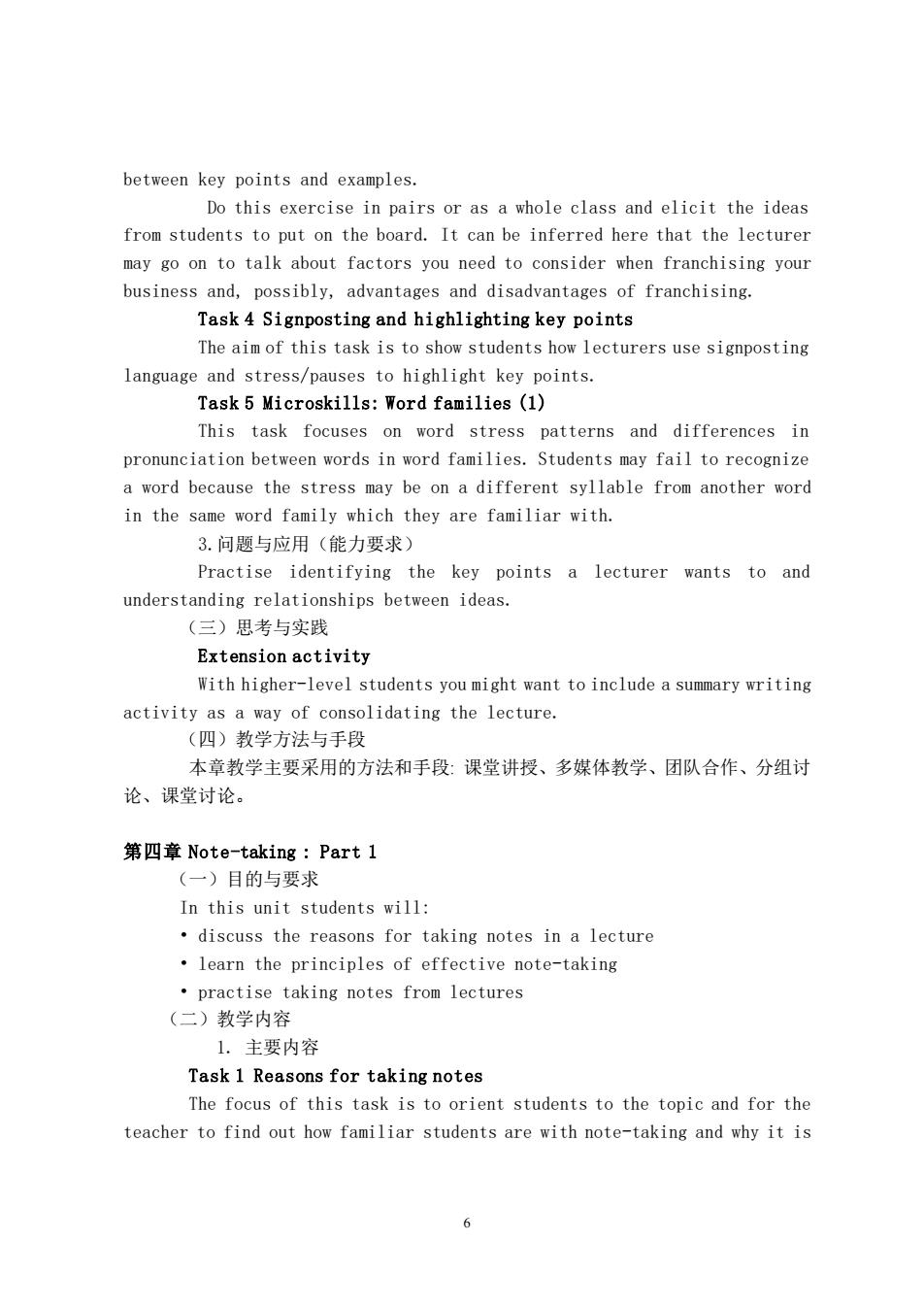正在加载图片...

between key points and examples. Do this exercise in pairs or as a whole class and elicit the ideas from students to put on the board.It can be inferred here that the lecturer may go on to talk about factors you need to consider when franchising your business and,possibly,advantages and disadvantages of franchising. Task 4 Signposting and highlighting key points The aim of this task is to show students how lecturers use signposting language and stress/pauses to highlight key points. Task 5 Microskills:Word families (1) This task focuses on word stress patterns and differences in pronunciation between words in word families.Students may fail to recognize a word because the stress may be on a different syllable from another word in the same word family which they are familiar with. 3.问题与应用(能力要求) Practise identifying the key points a lecturer wants to and understanding relationships between ideas. (三)思考与实践 Extension activity With higher-level students you might want to include a summary writing activity as a way of consolidating the lecture. (四)教学方法与手段 本章教学主要采用的方法和手段:课堂讲授、多媒体教学、团队合作、分组讨 论、课堂讨论。 第四章Note-taking:Part 1 (一)目的与要求 In this unit students will: discuss the reasons for taking notes in a lecture learn the principles of effective note-taking practise taking notes from lectures (二)教学内容 1.主要内容 Task 1 Reasons for taking notes The focus of this task is to orient students to the topic and for the teacher to find out how familiar students are with note-taking and why it is 66 between key points and examples. Do this exercise in pairs or as a whole class and elicit the ideas from students to put on the board. It can be inferred here that the lecturer may go on to talk about factors you need to consider when franchising your business and, possibly, advantages and disadvantages of franchising. Task 4 Signposting and highlighting key points The aim of this task is to show students how lecturers use signposting language and stress/pauses to highlight key points. Task 5 Microskills: Word families (1) This task focuses on word stress patterns and differences in pronunciation between words in word families. Students may fail to recognize a word because the stress may be on a different syllable from another word in the same word family which they are familiar with. 3.问题与应用(能力要求) Practise identifying the key points a lecturer wants to and understanding relationships between ideas. (三)思考与实践 Extension activity With higher-level students you might want to include a summary writing activity as a way of consolidating the lecture. (四)教学方法与手段 本章教学主要采用的方法和手段: 课堂讲授、多媒体教学、团队合作、分组讨 论、课堂讨论。 第四章 Note-taking : Part 1 (一)目的与要求 In this unit students will: • discuss the reasons for taking notes in a lecture • learn the principles of effective note-taking • practise taking notes from lectures (二)教学内容 1. 主要内容 Task 1 Reasons for taking notes The focus of this task is to orient students to the topic and for the teacher to find out how familiar students are with note-taking and why it is